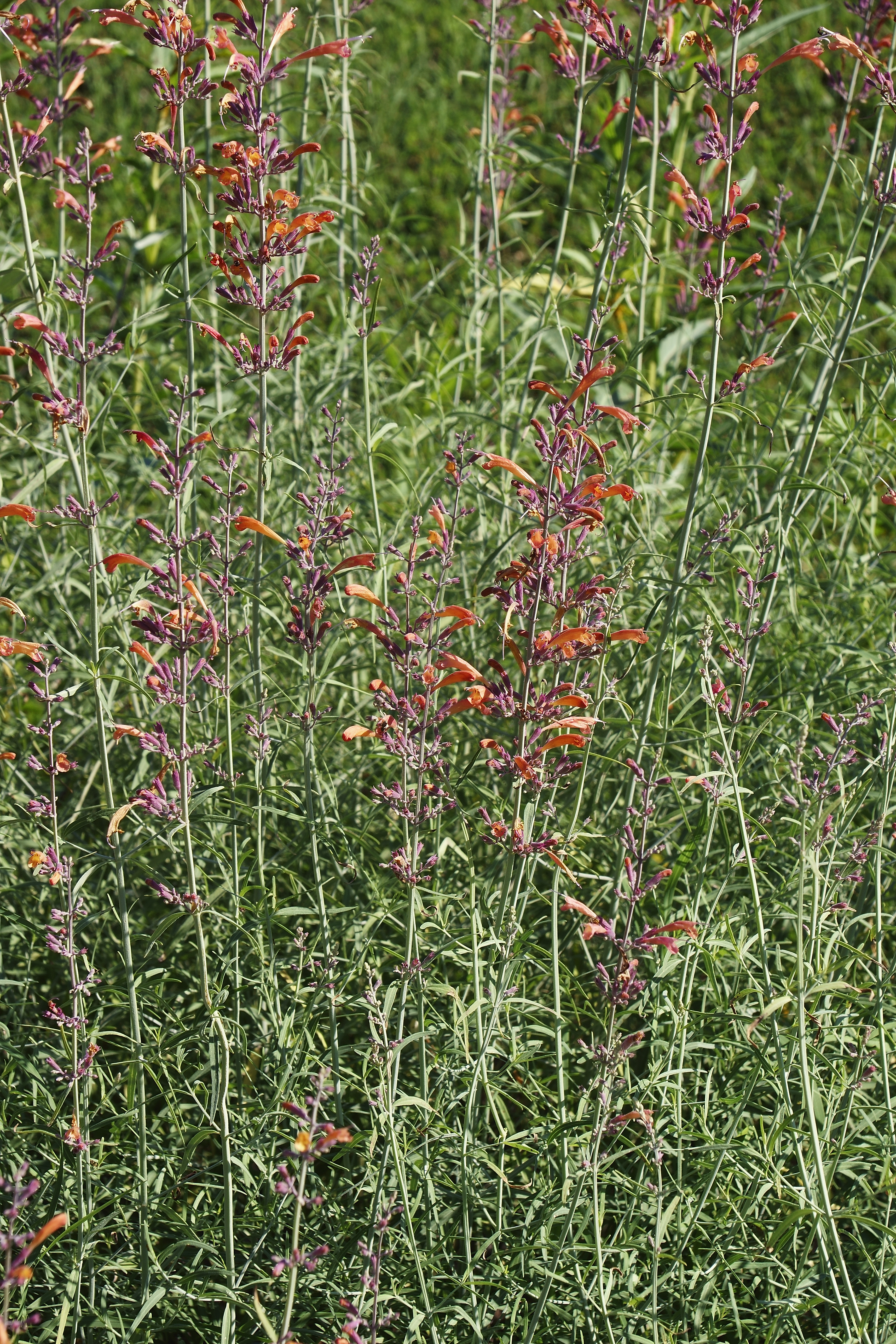Threadleaf Giant Hyssop
(Agastache rupestris)

Description
Agastache rupestris, known as the threadleaf giant hyssop, Mexican Hyssop, or licorice mint, is a wildflower of the mint family (Lamiaceae) native to the mountains of Arizona, New Mexico, and Chihuahua, Mexico. Popular in xeriscaping because of its heat tolerance and ability to thrive in dry, nutrient-poor soil, it is often planted in containers or as a border flower and used to attract hummingbirds. Displaying gray-green stems and leaves while dormant, its orange flowers with purple buds bloom from mid-summer until fall; if crushed the petals exude a pleasant scent. Agastache is a genus of aromatic flowering herbaceous perennial plants in the family Lamiaceae. It contains 22 species, mainly native to North America, one species native to eastern Asia. The common names of the species are a variety of fairly ambiguous and confusing "hyssops" and "mints"; as a whole the genus is known as giant hyssops or hummingbird mints. Most species are very upright, 0.5-3 m tall, with stiff, angular stems clothed in toothed-edged, lance shaped leaves ranging from 1-15 cm long and 0.5-11 cm broad depending on the species. Upright spikes of tubular, two-lipped flowers develop at the stem tips in summer. The flowers are usually white, pink, mauve, or purple, with the bracts that back the flowers being of the same or a slightly contrasting color. Agastache derives from the Ancient Greek words ἄγαν (ágan) "very much" and στάχυς (stákhus) "ear of grain", describing the flower spikes. The genus was established in 1762 by Jan Frederik Gronovius in the second edition of his controversial Flora Virginica, based on the specimens and notes of John Clayton. It is a member of subfamily Nepetoideae, which contains a large proportion of the world's aromatic culinary herbs. Within its subfamily, it belongs to the mint tribe (Mentheae), and therein to the catmint subtribe (Nepetinae). The Nepetinae are robustly supported by cladistic analyses of morphological and DNA sequence data, and were recognized as early as the mid-late 19th century. The closest living relatives of Agastache are believed to be two very different lineages: One is a group of mostly Asian and usually strongly aromatic and rather robust plants, which contains the typical dragonheads (Dracocephalum), true hyssops (Hyssopus), West Asian dragonheads (Lallemantia), and Japanese catnip (Schizonepeta).
Taxonomic tree:







